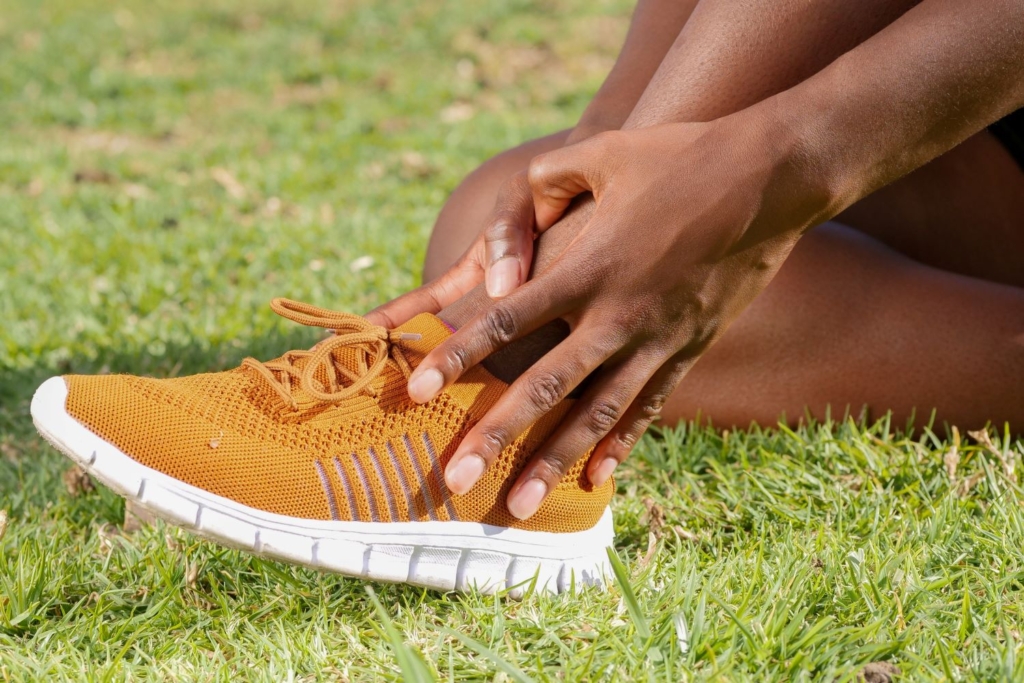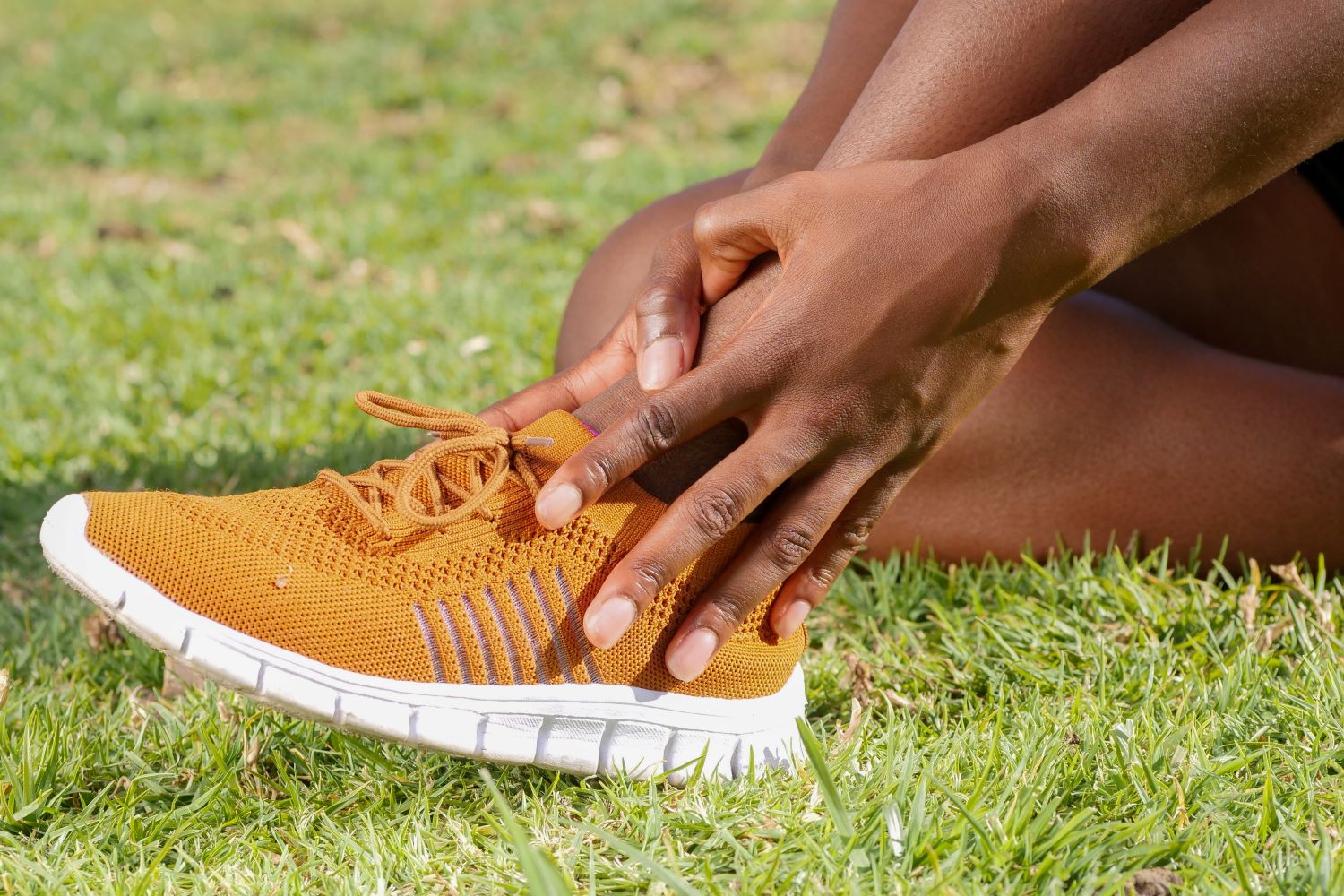Almost everyone has experienced leg cramps at one time or another. Typically, leg cramps can be quickly relieved and are not a cause for concern – but occasionally, they can be a sign of a more serious condition.

What Are Leg Cramps?
Leg cramping occurs when muscles contract involuntarily and cannot relax. This phenomenon is often caused by a variety of factors, such as dehydration, overexertion, or mineral or electrolyte deficiencies. When muscles don’t receive enough circulation or essential nutrients like potassium and magnesium, they’re more prone to cramping episodes, especially in the lower legs. Pain in the leg muscles, a leg cramp, nighttime leg cramps, and painful muscle cramps often represent that the blood is not getting enough blood flow, or the electrolytes are out of whack or in some cases, it just leg cramps after exercise and stretching will help.
Common symptoms include sudden, intense pain and tightness in the affected muscles. While occasional cramps are common and usually harmless, severe cases might indicate underlying health problems that warrant attention. Understanding the triggers and seeking appropriate treatment can help alleviate discomfort and prevent future episodes.
Most leg cramps last from a few seconds up to 10 minutes depending on the location. Some call them a Charley horse when they have cramping pain or leg cramps that start the relaxed position and then a cramped muscle seizes up the muscle and they experience pain.
What Causes Leg Cramps?
Leg cramps, those sudden, involuntary muscle contractions, can be triggered by a variety of factors. While they’re generally harmless and often linked to dehydration or muscle fatigue after exercise, they can sometimes signify underlying health problems.
Medical Conditions that May Contribute
Some have an underlying condition like peripheral arterial disease with or without limb loss or high blood pressure. Leg peripheral artery disease, (known as lower limb PAD) is from blocked arteries to the leg. Often there will be hair loss and other signs of impaired circulation to the legs. If one is not sure if they have peripheral arterial disease there are simple screening tests that can be done by your primary care provider. More serious manifestations of peripheral arterial disease, such as open wounds on the toes or bottom of the foot can require evaluation by a vascular surgeon.
Some have neurological conditions that lead to nerve damage, affecting the signals between the brain and muscles in the legs.
Additionally, individuals with a history of heart disease or a heart attack or carrying extra weight may be more susceptible to leg cramps. Further tests can be indicated to understand the causes, and in some cases, a trip to the emergency room may be indicated if there is chest pain, shortness of breath or new wounds on the leg.
A common alternate cause is venous insufficiency. These are patients that may have varicose veins on their leg or legs. Venous skin changes with leg cramps are common.
Although most muscle cramps are benign, severe or recurrent episodes accompanied by significant pain should prompt further investigation into one’s medical history and overall health to rule out any serious underlying conditions such as heart attack or other cardiovascular issues. Understanding these potential causes can aid in prevention and the development of effective management strategies.
You may experience leg cramps more often if you are:
- Pregnant
- A habitual smoker
- Older and/or have diminished muscle mass
- A patient with liver disease, high cholesterol, or diabetes
- Taking certain medications, like diuretics
Leg Cramps at Night
A very common questions is what causes leg cramps at night? Again it can be a variety of causes. Also people ask: What can they do to stop a leg cramps at night?
What Causes Leg Cramps at Night?
Leg cramps happen at night in a number of patients. These are also called nocturnal leg cramps. Nocturnal leg cramps happen in leg muscles in the lower upper leg (thigh muscle cramps), calf muscle cramps, and can occur with foot muscle cramps. A leg cramp or night leg cramps in any muscle can wake you up and be alarming. If you have underlying medical conditions such as vein disease, peripheral artery disease, heart disease or kidney disease it might be a good idea to check in with your primary care or other providers to evaluate for the common risk factors for most muscle cramps.
How to Stop Leg Cramps at Night
Once a cramp starts, you have to stretch your lower legs and muscles to stop the leg pain. To prevent nocturnal leg cramps, it’s essential to drink plenty to maintain proper hydration throughout the day and ensure an adequate intake of electrolytes like potassium and magnesium. Stretching the legs before bedtime can also help relax muscles and alleviate the tension that often triggers leg cramps, starting early with a regular stretching routine can significantly reduce the likelihood of experiencing nocturnal cramps. If caught early they are easier to stop.
How to Stop Leg Cramps Immediately
When faced with the immediate discomfort of leg cramps, several strategies can offer relief.
Step 1 is to gently massage the affected leg muscle to help stimulate blood flow and relax the cramped muscle fibers.
Step 2 is to try stretching the leg by gently flexing the foot upward towards the body, holding the position for a few seconds.
Step 3 is to consider heat. Applying a heating pad or warm compress to the cramped area can also help soothe the muscle and alleviate the pain. Alternatively, soaking in a warm bath can relax the muscles and provide relief from acute muscle cramps. Finding a comfortable starting position and allowing the warmth to penetrate the leg muscle can expedite the relaxation process and bring quick relief from leg cramps.
What to Do for Leg Cramps
If you experience leg cramps often, it’s not time to worry yet! Most cramping is not problematic on its own, and will go away with proper mitigation tactics.
Here are some important steps you can take to prevent and relieve leg cramping:
- Wear compression hose if you have leg swelling
- Get enough daily magnesium and potassium
- Drink plenty and stay hydrated with water or electrolyte drinks
- Limit caffeine and alcohol (dehydration causing)
- Warm up before exercise and cool down afterward
- Stretch regularly, including before & after a workout
Muscle Cramps During a Workout
Muscle cramps can be a concern with exercise. If you experience cramping pain during a workout, stop the exercise immediately. Reposition your leg to find comfort, then stretch the area until your symptoms are no longer present. For most people their muscle cramps will improve with these measures.
Preventing Leg Cramps
Patients often ask about strategies to prevent cramps and muscle cramps. Preventing a leg cramp or leg cramps involves a multifaceted approach aimed at promoting muscle health and overall circulation. Incorporating regular light exercise into one’s routine, such as walking or light aerobic activities, helps strengthen muscles and improves circulation, reducing the likelihood of experiencing leg cramps. Maintaining a healthy weight through a balanced diet and staying hydrated supports vascular health, reducing the risk of fatty deposits that can impede blood flow and lead to cramping.
Wearing supportive shoes and practicing proper posture can also alleviate strain on leg muscles.
Additionally, managing conditions like high blood pressure and prioritizing self-care, including adequate rest and stretching, can contribute to overall blood vessel health and help prevent leg cramps in the long term. Your primary provider can evaluate your risk factors, suggest an exercise routine, self care, consider urine tests or blood tests, tests of your vessels that carry blood in your legs, and talk to you about general strategies to prevent cramps.
When To Worry About Leg Cramps
If chronic leg cramping continues outside of exercise and with proper hydration, and/or if you have severe discomfort, swelling or skin redness, this may be a symptom of a more serious health condition. It is best to start with your primary care provider who can start the process to evaluate from the broad list items that can this issue. There are both vascular and non vascular causes, and they can initiate a work up to sort this out.
Vein Causes of Pain in the Legs with Muscle Cramps
If you have venous insufficiency you may be able to be helped. At Inovia Vein, we examine patients with chronic leg cramps and pain in their legs and even look for blood clots and other symptoms of venous insufficiency. These legs conditions can lead to swelling in the blood vessels that creates cramping.
For patients shown to have a history of deep venous thrombosis or venous insufficiency, we will often recommend exercise, leg elevation, and the use of compression stockings on legs to help resolve these symptoms. In some patients, when indicated, treating the superficial venous insufficiency with approaches such as Closurefast RFA, Venaseal and Varithena can reduce the cramping considerably.
Make An Appointment See a Doctor
If you have concerns about blood vessels such as veins and your legs cramps, making an appointment is easy to set up a clinic visit: Simply fill out our Online Vein Screening Form or call any of our clinics in Northwest Portland, Tigard, Happy Valley, Tanasbourne or Bend, Oregon or Vancouver, Washington.
